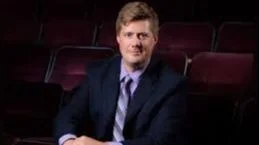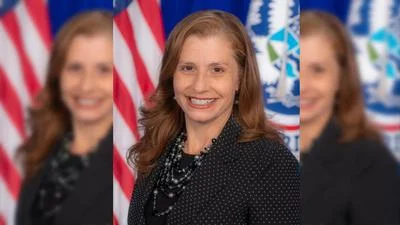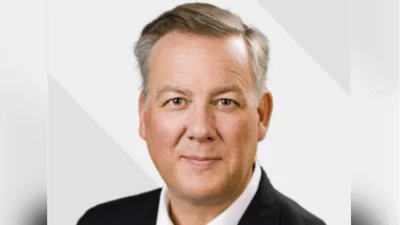The summer was a busy but memorable one for three East Central University Art + Design: Media + Communication faculty members who spent time traveling across the world.
For assistant professor Christyn Overstake, her artistic work took her to a symposium in a German village called Hilmsen. A symposium, in her words, “is a place where people gather to focus on a specific subject.”
For Overstake, her expertise and the area of work she was involved in was 3D printing and metal casting.
During her three weeks at Atelierhaus Hilmsen, Overstake said, “I made my own work and collaborated with the other artists.
“We gave artist presentations to present our work and talk about our research. We made our work and shared our processes with one another, and it was a lot of fun.”
Discussing her craft in further detail, Overstake said, “Traditionally, in manufacturing, the goal is to make identical copies and I have a different goal, where my goal is now to create forms that deviate, so every time I make the form it looks different.”
Overstake brings a unique perspective to the manufacturing process, which is evident in the quality and success of her work.
She continued, “So, I’ve been casting into off cast molds and doing these experimental processes. This time I made digital scans of some of my previous castings and manipulated them in a digital program, so they turn into these weird balloon things. The digital program distorted the forms and made them kind of bizarre looking. Instead of repairing the files, I printed them as they are so they’re kind of artifacts of what happens through that digital process.”
Overstake was able to bring some of her artifacts home while leaving others behind at the Atelierhaus Hilmsen, leaving a mark from her time at the symposium.
As for her time in Germany, it is safe to say Overstake enjoyed her international trip.
“It was a lot of fun. I’ve done a lot of 3D printing in some other projects and in some other work. I’ve done a lot of that, but not within this particular area of research, so that was kind of a new adventure for me.”
Overstake was not the only ADMC professor to have a busy summer, however.
Anne Yoncha, also an assistant professor within the ADMC department, was just as busy stateside.
Traveling to Gloucester, Virginia, Yoncha took part in a summer residency. Slightly different than a symposium, as previously discussed, residencies “are chances for artists to have a working vacation,” Yoncha said.
It was during this time that she was able to showcase what she does best: combining art with science.
“I was living in this little house by a river and had a little shed art studio and I did a solo show there,” she said about her time in Virginia.
Yoncha continued, “I also did a workshop for the people who lived there on how to make natural dyes with tidewater plants. It’s on the Chesapeake Bay, so there’s all this tidal influence and a lot of research about what’s happening with sea level rise and climate change, what’s happening to the ecosystem, to the plants around there. A lot of my practice is about combining art and science and how do we visualize these things that are maybe hard for us to see because they’re underwater or hard for us to see because they’re underground, so I was really interested in what was going on over there.”
When it comes to combining her two areas of expertise, it can be a difficult task to present and portray scientific research through art in a manner in which is easily understandable and digestible to the everyday person.
This task did not stop after her summer residency, as Yoncha returned home to collaborate with the local Oka’ Institute for a project that is part of a summer research grant.
“Our project is called ‘Shape of the River,’ and it’s all about the Blue River and the name is kind of a play on words.”
She explained, “It’s about the actual, physical shape of the river, like if you look from an aerial perspective, but also about shape like condition, how is the river doing? We know that river and aquifer underneath of it are really intimately connected, and of course, we get our water from the aquifer, so it’s really important to us, too.”
This is where Yoncha’s ability to combine her two worlds comes into play. In order to portray the natural world with art, her and her team have been creative with their resources.
Using a dental vacuum former to create molds of fish and using recycled glass concrete pavers to depict the aquifer, they are thinking outside the box to illustrate their message.
“One thing we’re thinking about doing, we have some of these pavers that we’re staining green and some that kind of stay this natural color, so we think we’ll have this natural color show the parts of the aquifer that would dry off first, what parts of the river would be impacted most by that. That’s something that Oka’ Institute is researching,” Yoncha said.
Their work will be shown at the Oka’ Water Conference in November.
Last, but not least, the ADMC family welcomed Melina Smyres late this summer. Smyres made the move from Florida to begin her work as an Instructor of Graphic Design at ECU.
A New York native, Smyres graduated at The School of Visual Arts New York City before interning with Milton Glaser, famously known for creating the “I Love New York” logo.
“I really enjoyed getting to work with some of the best designers and seeing sort of their process and all the different approaches that many of them had… I got a lot of different types of experiences about what a designer could be and also sort of how a designer could kind of mix with being an artist or an author and entrepreneurialism as well,” she said.
Not long after, she began her career as an entrepreneur, working “on a book that required over 70 illustrations and ended up winning quite a few awards and a lot of recognition.” After that, she was approached about becoming a professor, so she took that opportunity, eventually working for several different public and private institutions in New York, Oklahoma, and Florida.
While Smyres was in Florida, her university was hit with not only a hurricane, but also a global pandemic. These events shook up the funding for her department, and she eventually decided to stay home with her young daughter and pursue her own creative work that she had not been able to fully concentrate on while being a professor.
After writing a couple books for her daughter, among other creative work, she began to get the itch to teach again and applied for a job at ECU.
Once she was hired, the move back to Oklahoma was underway, with the semester quickly approaching as well. Now that the school year is underway, she has begun to settle into her new role and is grateful and excited to be a part of ECU.
When asked how it feels to join the ADMC family, Smyres replied, “Great.”
She continued, “The students are very enthusiastic, the staff and faculty are the most helpful people that I’ve encountered. They hired me sort of last minute and were very helpful with helping me transition.
“They’ve been trying to help me as much as possible even though they’ve been busy themselves and even the students have been very helpful, understanding, and just very engaging and enthusiastic. I’ve enjoyed working with them so far,” she said.
The ECU ADMC department is happy to have her on board as well.
Apart from traveling across the globe, what do professors with trips to Europe, Virginia, and a move in from Florida all have in common?
The answer, it would seem, is within the responses they each gave to one particular question. When asked what the favorite part of their job was, each professor had the same answer: the students.
Overstake said, “Well, this is everybody’s answer, right, it’s the students?
“The students are the best part of the job… I really love helping other people realize their goals in producing works of art. It’s really rewarding to help my students build their skills and to realize all of the things they ever wanted to create.”
Yoncha said, “I think it’s the students, definitely.”
Whether it is in the classroom, a workshop, or kayak trip, she enjoys building bonds and relationships, a special quality about a small campus like ECU.
For Smyres, her answer was, “Bringing inspiration to the students. I think that’s the most important thing. It’s one thing to teach, but it’s another thing to try to actually inspire them. That’s the most important thing to me, actually bringing that inspiration and enthusiasm.”
It is always great when a group has a unified goal, and for the ECU ADMC staff, that is exactly the case. One focused, unified vision to create an environment in which the students are able to succeed and thrive.
Original source can be found here



 Alerts Sign-up
Alerts Sign-up